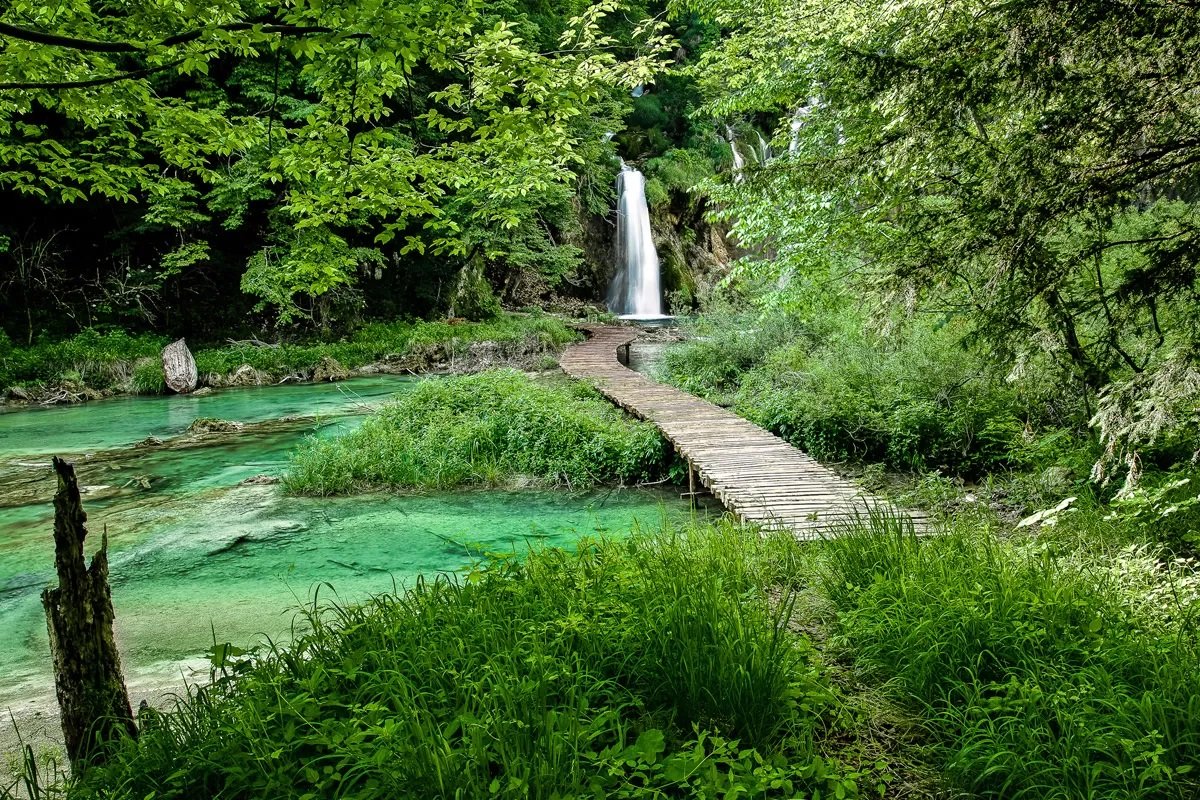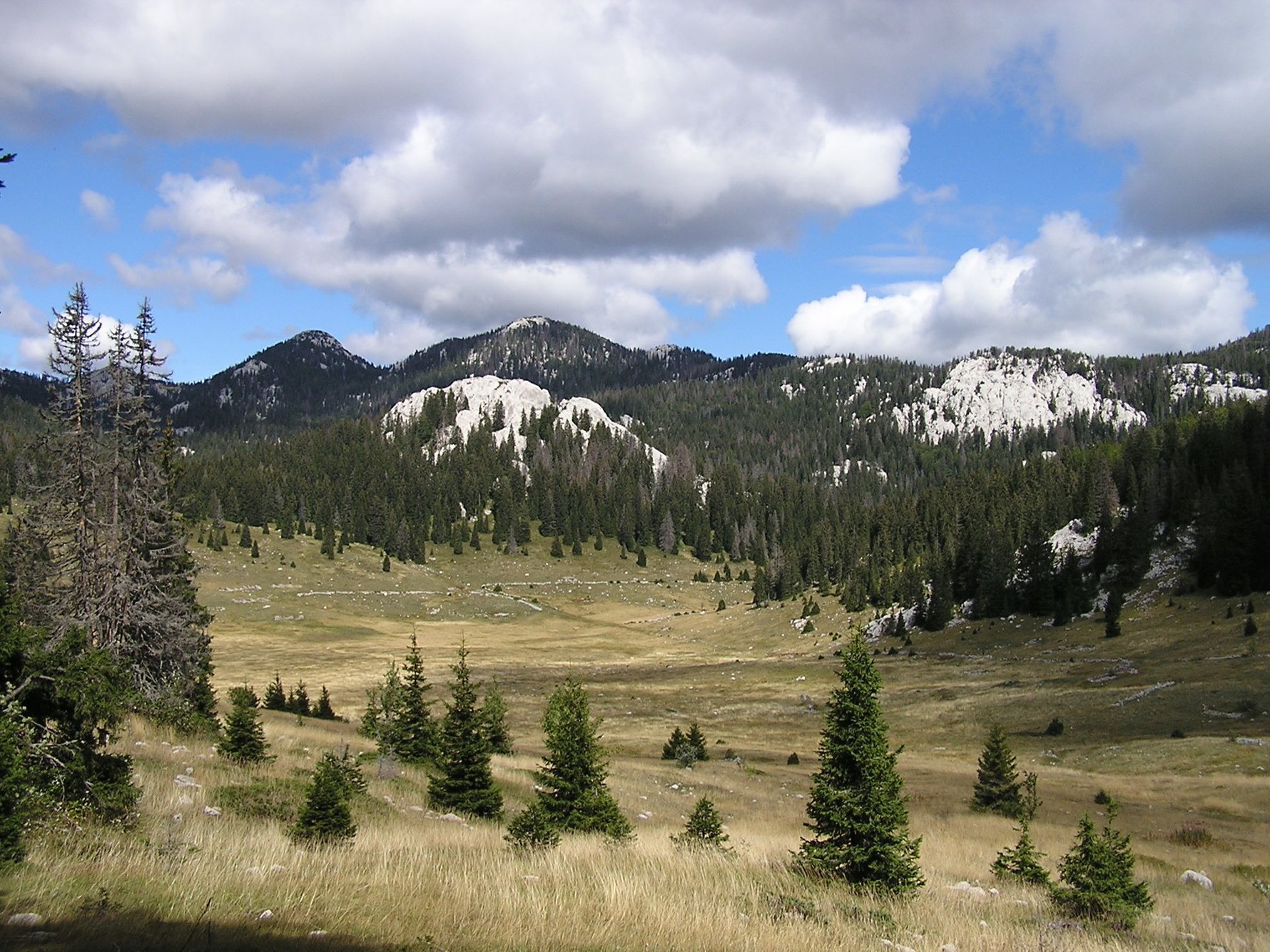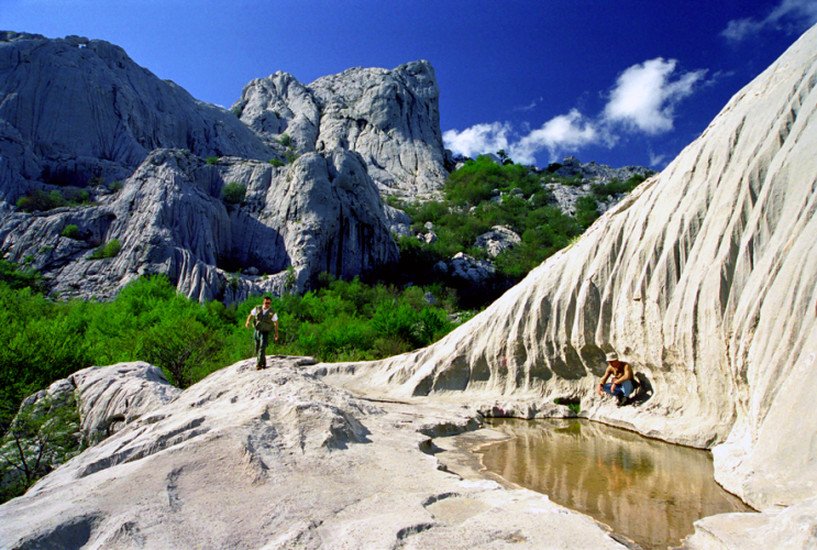Plitvice Lakes
A sultry oppression sat over the fields and mountains for months. People and animals, meadows and gardens yearned for refreshing, gentle rain. The Crna Rijeka river, ordinarily a cheerfully babbling stream, dried up. The people's prayers and pleading were all in vain the skies showed no mercy on them. But then the Black Queen with her glittering entourage appeared in the valley. The people cried for help, asking for water, without which they would all perish. And the Queen took pity on them: with great thunder and lighting, heavy rain began to fall in an instant, bringing life to the people and animals, fields and meadows. The rain poured and poured, and the waters began to grow, until they formed the lakes as we see them today.
In 1910, a student of the region wrote that the lakes are ‘… rather out of the way, remote from the lively and modern thoroughfares, out in the Croatian karst, some 9 – 10 hours by coach or nine–sitter public omnibus, with a change of horse's at Jasenica’. Well you may not be depending on that type of horsepower to get here, but apart from that, should you trek down here in the summer then the experience is going to feel fairly similar – because Plitvice is now on the main thoroughfare from the north to the middle and southern parts of the coast, and believe us, this small road gets busy!
However, rest assured, the park is well worth the potentially nightmare journey. Let’s get the technical bit out of the way shall we? It is entirely true that the lakes are built by plants. The warm, aerated water of the streams that permeate the park are ideal to promote the growth of mosses. The mosses sit in the water and catch in their roots the dissolved limestone that the rough water sweeps down. This material is then called travertine. Over time this limestone hoard builds, new mosses jump on the top and round it all goes again. Leave to stew for a few thousand years and hey presto, you have yourself a series of lakes consisting of waters trapped by the limestone barriers that the mosses have built.
Further than this, these mosses, perfectionists that they are, are not satisfied with their creation and continue to feverishly construct new barriers. Measurements of the depth of the water taken in 1855 were 3m lower than those recorded in 1958. These glistening blue and green lakes are linked by waterfalls as the water tumbles onwards down the staircase that the barriers create, the tumult ending 135m below the point at which it started, as the waters leave the final lake in the series and plunge in one last 72m dive to join numerous cascades racing to fuse with the Korana River.
Around the lakes stands dense forest with the occasional glade – mostly the result of human engineering for the sake of livestock. Many paths lead through the park and around the lakes providing you with a superb playground to wander about in, feeling insignificant in comparison to the majesty of nature; the power of the waters; the vigour of the forest; the achievements of moss.
Velebit

Seen from the coast, the Velebit range appears to be a forbidding wall of arid rock, although there are plenty of forests, meadows and pastures hidden away in the highland troughs that run between the brittle grey ridges. The western flanks of the Velebit mark the transition from the Mediterranean to the Continental European climatic zones, and the prevailing type of vegetation can change in the space of a few kilometres. Covering the lower limbs of the mountain is the parched rocky scrub so typical of the Adriatic coast, while dense forests of beech stretch across the slopes further up. Spruce, fir and juniper characterize the higher altitudes, and a multitude of alpine flowers can be found above the tree-line – it is claimed that the Velebit as a whole contains 2.5 times more species of flora than the whole of Great Britain put together. The Velebit sustains a diverse animal population, including mountain goats, wild cats, wolves and bears.
In the past the coastal belt of the Velebit was intensively terrace-farmed, as can be seen by the dry-stone balls that still cover the range’s lower slopes. The local inhabitants migrated up and down the mountain according to the season, staying near the coast in winter and taking their flocks to the high-mountain pastures in summer. Most of the olive groves, fruit orchards and sheep pastures that used to stretch along the hillsides have long ago reverted to scrub. Logging remains an important local industry higher up the mountain, and with its wealth of unspoiled scenery and attractive scenery the region is becoming a much-favoured destination for get-away-from-it-all travellers.
One thing the Velebit range is famous for is its unpredictable weather. Storms can roll in with sudden ferocity and temperatures frequently plummet without warning. If you are planning any walking or mountain biking, always seek advice from the National Park offices before setting out into the wilds.
Paklenica

Such beauty cannot go to waste so we invite you to partake in the many adventure activities on offer. The magnificent
canyon Velika Paklenica is home to natural mountain climbing and rock climbing spots; mountaineering and hiking are
popular with over 150km of trails. White water rafting and canoeing from the highest point of the Zrmanja River will
leave even the most experienced breathless. Become a speleologist for the day, admiring the deep caves and their
rich rock formations. The incredible diversity of landscape in such a small space can be experienced by mountain
bike or opt for an off-road excursion. Local tourist authorities publish excellent maps. Guided tours and qualified instructors for adventure activities need to be reserved. If you crave some fresh alpine air, mountain hut accommodation is available. Be warned, book in advance.
Karl May fans and nature lovers can visit the original screening locations of films dedicated to the legendary Indian chief Winnetou. This includes a thematic exhibition in the old part of the Alan Hotel where the film crew resided during the shooting of the motion picture in the 1960’s. The exhibition also includes authentic bedrooms, documented photos from the shooting and original objects used in the films. Besides visiting the various places in the Velika Paklenica canyon where the film was shot in motion, we strongly recommend the Velebit jeep safari and the visit to the beautiful surroundings of Tulove Grede and the so-called Pueblo plato. For all essential information, visit www.rivijera-paklenica.hr.





Comments